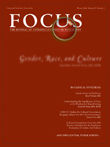Testing an APA Practice Guideline: Symptom–Targeted Medication Utilization for Patients With Borderline Personality Disorder
Abstract
Background: The goal of this study was to test whether the use of psychotropic medication treatment for borderline personality disorder (BPD) was consistent with proposals in the recently published American Psychiatric Association’s Practice Guideline for the Treatment of Patients With Borderline Personality Disorder. Method: Medication utilization by patients with BPD was assessed prospectively over a 2-year period prior to the publication of the Guideline. Three BPD symptom clusters—cognitive-perceptual, affective dysregulation, and impulsive-behavioral dyscontrol—along with demographic and functioning variables were used to predict the use of five classes of medication. Results: Symptoms of impulsive-behavioral dyscontrol significantly predicted use of both neuroleptics and anticonvulsants. Cognitive-perceptual symptoms were inversely related to anticonvulsant use. Conclusion: While some pre-Guideline medication practices with BPD patients were consistent with the recommended algorithms, physicians may also have been influenced by a variety of considerations, including level of functional impairment and the presence of comorbid Axis I conditions.



